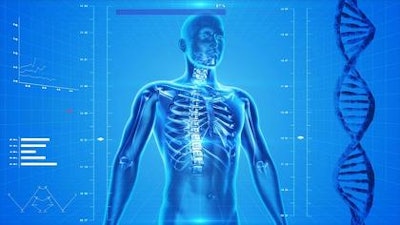
A chemist at the University of California-San Diego successfully mapped the chemicals on the human body, which could lead to advances in consumer products, medical science or even criminal justice.
Researchers were previously able to identify the locations of microbes and bacteria living on human skin at any one time, but the system developed by UCSD's Pieter Dorrestein indicated the effects of those organisms.
Dorrestein and UCSD scientists swabbed a man and a woman — neither of whom had showered or used consumer products for three days — twice at hundreds of different locations on the body. One sample mapped the microbes, while the other showed the molecules they produced. Those molecules, experts said, reflected the positive and negative effects of those microbes on the body.
The research showed products such as shampoo, sunscreen and lotion can linger for days after their use, and scientists said people's daily hygiene routines likely affect how microbe populations impact their health.
In addition, researchers believe a database mapping a large population could provide clues to microbe activity that indicates certain medical conditions, which could potentially give physicians an easier diagnostic option.
Another UCSD researcher, meanwhile, is testing the possibility of matching molecules at crime scenes with potential suspects through their soap or medications.
“We’re shedding tons and tons of cells, and you would’ve thought that would’ve been enough to eradicate a previous chemical signature,” Jack Gilbert, a microbiologist at the Argonne National Laboratory in Illinois, told Wired. "But like a tattoo, that signature doesn’t disappear very quickly.”






















